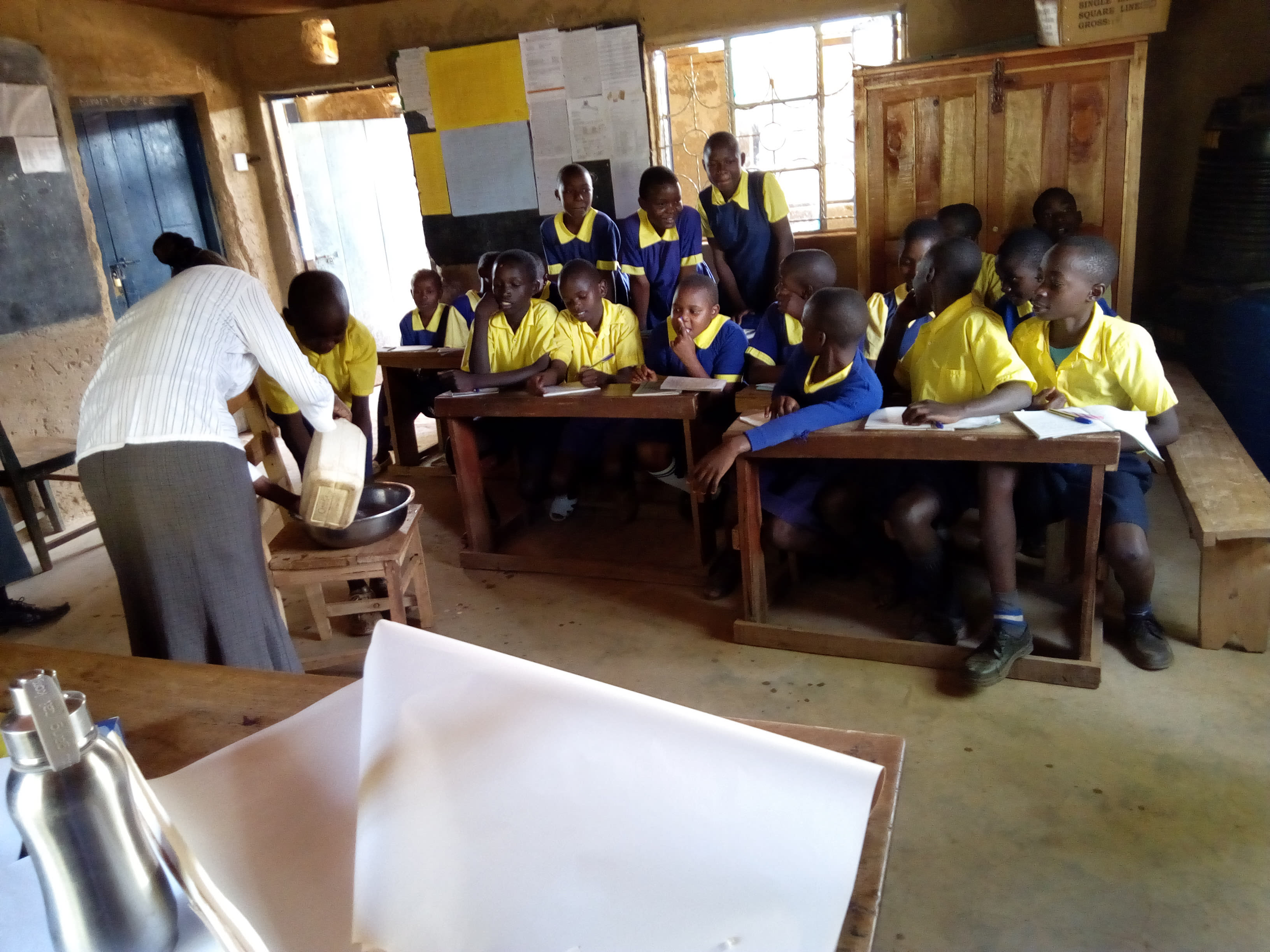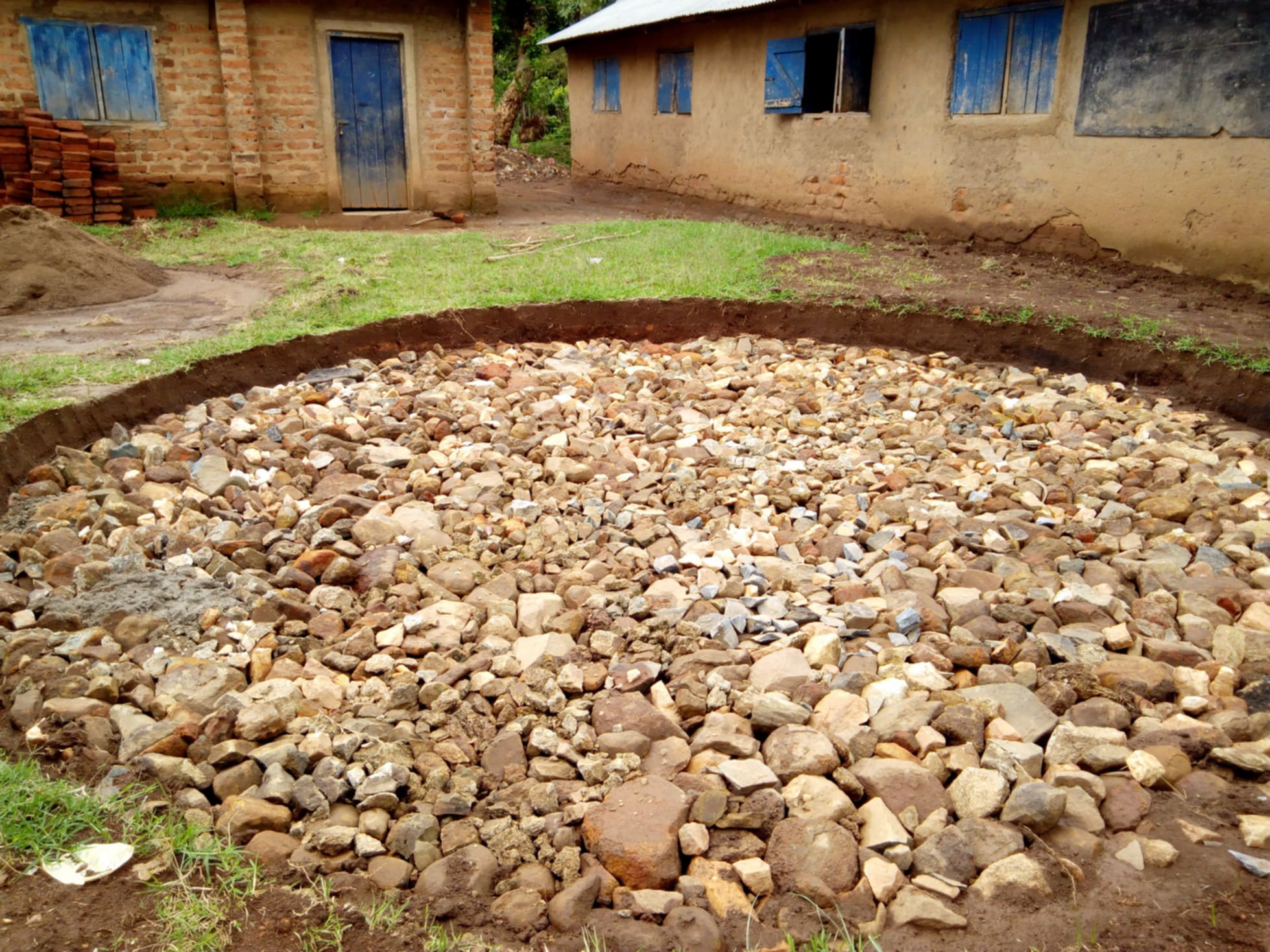This project is a part of our shared program with Western Water And Sanitation Forum (WEWASAFO). Our team is pleased to directly share the below report (edited for clarity, as needed).
Welcome to the School
Kakubudu Primary School has a student population of 604. It employs 12 teachers and four support staff. (Editor's Note: While this many people may have access on any given day, realistically a single water source can only support a population of 350-500 people. This community would be a good candidate for a second project in the future so adequate water is available. To learn more, click here.)
Children wake up very early to prepare for school. Upper classes must be at school at 7 AM for morning study hall. Then, they leave again to look for water for cleaning their classrooms and toilets, and for cooking. Thereafter, they get back on track for their normal classes which stretch from 8 AM to 10 AM. After break, they have class until lunch at 12:45 PM, when they return back home to eat with their families. Afternoon classes begin again at 2 PM. Later, they break for games at 3 PM until dismissal at 4 PM.
Water Situation
There is no water source at Kakubudu Primary School.
Students are thus sent out with jerrycans to fetch water throughout the day. They go to an unprotected spring, where water is highly contaminated by erosion, dirty rainwater, animals, and human activities. There are insects visibly living in the water. The water is further contaminated as students dunk their dirty plastic containers to fill them. Furthermore, this spring is one kilometer away from the school.
When these pupils have to fetch water, the community members do not allow them to fetch water first. The community feels they have that right since they have other engagements to get to. The pupils are then forced to wait for a long time and as a result, study time slips away. When they eventually go back to school, they are punished for being late for classes. Some students fear that punishment so much that they decide not to return to school at all.
When delivered back to school, water is stored in large plastic drums.
The school reports numerous absences due to waterborne disease outbreaks among students. Illnesses include typhoid, amoeba and diarrhea-diseases. According to Headteacher Solomon Busumu, "parents are really using a lot of money treating their children."
Sanitation Situation
There are 14 pit latrines made of bricks and iron sheets. Six of these are in good condition, five are almost full, and three are condemned. A couple of the 14 are also missing doors. Because of these poor latrine conditions, open defecation is an issue on school grounds.
There are no hand-washing stations for students or staff. Garbage is piled in the back of school property and burned on a daily basis. The sanitation teacher told our staff that "our people perish because of lack of knowledge."
Plans: Hygiene and Sanitation Training and Hand-Washing Stations
Training will be held for two days. The facilitator will use PHAST (participatory hygiene and sanitation transformation), ABCD (asset-based community development), CTC (child to child), lectures, group discussions, and handouts to teach health topics and ways to promote good practices within the school. The CTC method will prepare students to lead other students into healthy habits, as well as kickstart a CTC club for the school. This CTC club will oversee the new facilities, such as hand-washing stations, and make sure they are kept clean and in working condition. The two hand-washing stations will be delivered to the school, and the club will fill them with water on a daily basis and make sure there is always a cleaning agent such as soap or ash.
Plans: Rainwater Catchment Tank
A 50,000-liter rainwater catchment tank will be constructed on school grounds. Teachers, students, and parents will gather the materials needed for this project, including sand, ballast, bricks, and hardcore. This contribution will fuel a sense of responsibility for the school and community to take care of their new facilities. Once materials are mobilized, the WEWASAFO team will arrive to lead the construction effort.
With adequate clean water, the school will have water for drinking, cooking, cleaning, and hand-washing. The school will no longer have to rely on the small amounts of (often contaminated) water fetched by students. So much time will be reallocated to these students' education!
Plans: VIP Latrines
Two triple-door latrines will be constructed, providing three new latrines for each gender. Latrine materials will be mobilized the same way as the tank, ensuring the school feels these facilities are truly theirs. And with a rainwater catchment tank nearby, there will be enough water to keep them clean.
School administration and parents are positive that with these new facilities and training, their students’ academic performance will improve. Students will be healthy and empowered to focus on what’s important!

 Rainwater Catchment
Rainwater Catchment
 Rehabilitation Project
Rehabilitation Project





























